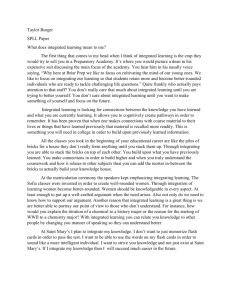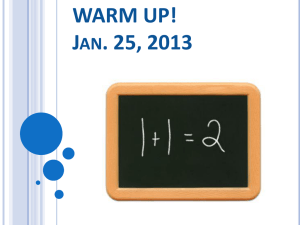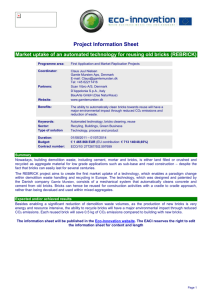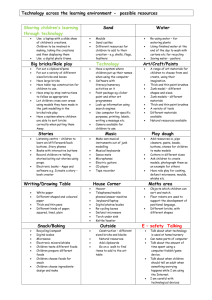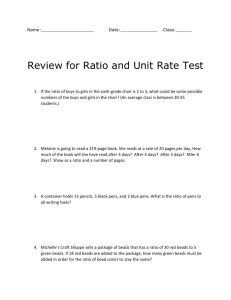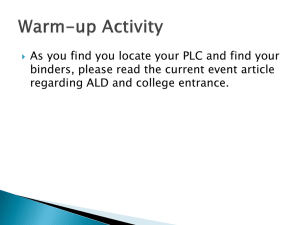QM B Lego Simplex
advertisement
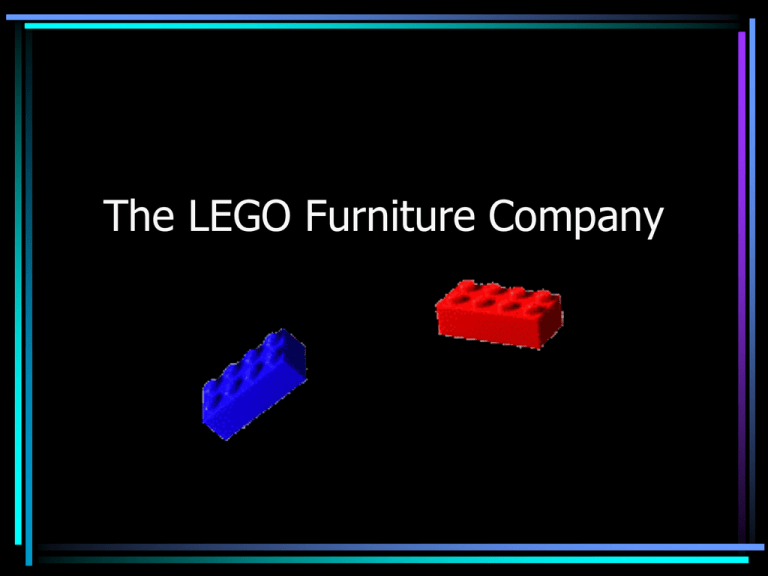
The LEGO Furniture Company Scenario • You manufacture tables and chairs. Small brick • Tables and chairs are manufactured from small and large bricks. Large brick Furniture Specific Info • Table – 2 large bricks – 2 small bricks – $16 profit • Chair – 1 large bricks – 2 small bricks – $10 profit Limited Resources: • You have 8 small bricks and 6 large bricks The Goal • How many tables and how many chairs should be produced to maximize profit? One possible solution Is this solution optimal? Profit = 3*16 = $48 That is for you to find out! You BUILD the furniture • GOAL: – Find the combination of tables and chairs that yields the greatest profit GOOD LUCK! Table $16 Chair $10 Linear Programming Vocabulary • Linear Programming: – Method or process used to solve problems that involve using resources most efficiently Linear Programming Vocabulary • Constraints: – Limitations created by scarce resources (time, $, supplies, equipment) Furniture Building Activity as a Linear Programming Problem Define variables x – number of tables to produce y – number of chairs to produce Furniture Building Activity as a Linear Programming Problem (continued) Write the objective function (Remember the OBJECTIVE is to maximize profit.) P(x,y): 16 x + 10 y Furniture Building Activity as a Linear Programming Problem (continued) Write the constraints x – number of tables to produce y – number of chairs to produce 2x + 1y ≤ 6 2x + 2y ≤ 8 x ≥ 0, y ≥ 0 Large bricks Small bricks Non-negativity Graphical Insight Lego 7 2x+y≤6 6 Chairs 5 4 Small Bricks 3 Large Bricks 2x+2y≤8 2 1 0 0 1 2 3 Tables 4 5 More Linear Programming Vocabulary • Feasible Region: – Set of points that satisfy all the constraints – The shaded region! • Vertices/Corner Points: – Intersection points of the inequality equations (constraints) More Linear Programming Vocabulary • Optimal Solution: – The outcome of using resources most efficiently to obtain the maximum or minimum. – Occurs at a corner point. Furniture building optimal solution Corner Point Coordinates (x,y) P(x,y) = 16x +10y (0,4) $40 (3,0) $48 (2,2) $32 + $20 = $52 (0,0) $0 Steps to Linear Programming Step Step Step Step 1: Define the variables. 2: Write a system of inequalities. 3: Graph the system of inequalities. 4: Find the coordinates of the vertices of the feasible region. Step 5: Write a function to be maximized or minimized. Step 6: Substitute the coordinates of the vertices into the function. Step 7: Select the greatest or least result. Answer the problem. Additional Examples The area of a parking lot is 600 square meters. A bus requires 30 square meters. A car requires 6 square meters. The attendant can handle only 60 vehicles. If a bus is charged $7.50 and a car $2.50, how many of each should be accepted to maximize income? Additional Examples Jerry works no more than 20 hours a week during a school year. He is paid $10 an hour for tutoring geometry students and $7.00 an hour for delivering pizzas for Pizza King. He wants to spend at least 3 hours, but no more than 8 hours a week tutoring. How many hours at each job should he work to make the most money?
